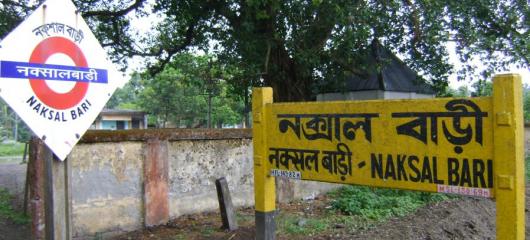Naxalbari Movement – an ideology that refuses to die: 50 years hence
I still remember the time, when as a gawky teenager I stood outside the Communist Party of India (CPI) office in New Delhi, wanting to go inside and enroll as a party member. My generation at the time was listening to Michael Jackson, reading heavy textbooks, planning to study and eventually move to the affluent Capitalistic West. And here I was poring through the idealistic literature of Das Kapital and the NCERT school history books, which were heavily influenced by Nehruvian Socialism. I was hoping to follow in the footsteps of Marx, Engels, Lenin and other comrades, and do something good for the peasants and workers. However, more than the literature it was the folklore of the Naxalite movement that caught my imagination. In spite of being heavily suppressed by the Government controlled media, the movement managed to evoke tremendous sympathy and participation from the young and old across classes, illiterate and intelligentsia alike. The founding triumvirate of Charu Mazumdar, Kanu Sanyal and Jangal Santhal eventually fell out and died in unfortunate and mysterious circumstances, but their call for justice and reason for violence shook an entire generation, and it still reverberates even now.
The reason was such.
In 1967, Naxalbari was a village, where a tribal youth named Bimal Kisan obtained a judicial order to plough his land. However, he was attacked by the landlord and his hoodlums. The tension escalated on age-old questions of tribal access to land.
It eventually reached a crescendo when the collective group of landless peasants and tribals couldn’t take it anymore.
The Naxalite movement was crushed by the government. In reality, the violence was crushed, but the thought or the ideology remained initiating multiple agrarian and land reforms.
As for me, a city-bred boy, I didn’t quite gather enough courage to enter the CPI office. Instead, I went back home and immersed myself preparing for engineering entrance by trying to solve Physics numericals from a book by I.E. Irodov, who incidentally was a citizen of communist Soviet Union. The life took its conventional route of studies, jobs and corporate career – the capitalist route, now that the rival communist/socialist thought had been subdued.
50 years hence.
The iron curtain is now replaced by green (money) curtain.
Communist China is more capitalistic than its ideological comrades down south in India.
The Naxalite movement has now transformed into the Maoist movement with splinter groups, each one trying hard to claim the legacy. The movement is violent or is painted such by the government. In this war between the Government and the Maoists, nobody is winning.
(Please refer: India’s Silent War, documentary by Al-Jazeera)
Much has changed. Yet, not much has changed.
Most of the tribals and the indigenous people still live in abject poverty paradoxically in mineral rich lands and forests. They are still being evicted from their forest lands, where they lived for centuries, to facilitate mining. (Source: Chhattisgarh govt cancels tribal rights over forest lands, Business Standard)
This 100 million indigenous population, the original inhabitants of India, is facing a sure and certain extinction. The reasons are many, in some cases its slow and gradual genocide akin to the one in the Americas by the Spanish Conquistadors.
The masters or the landlords are long gone only to be replaced by the new ones. Who are they?
Your guess is as good as mine.
Disclaimer: These are author’s personal thoughts. This post is not meant to be a political commentary or article.
Please refer 50 years of Naxalbari

 Follow
Follow